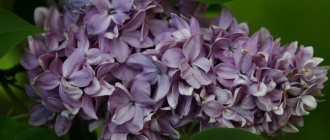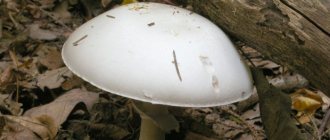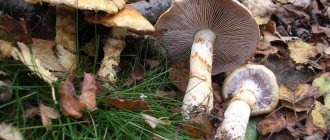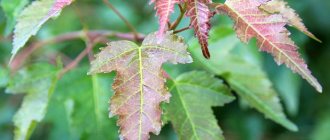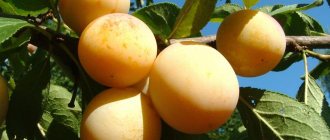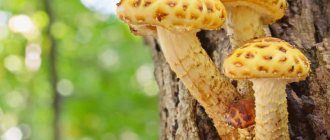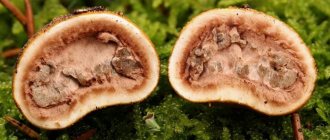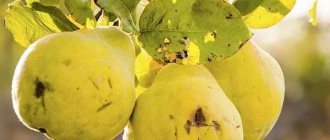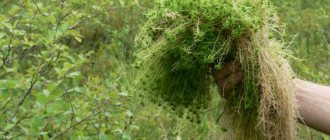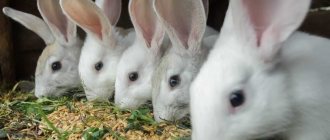Characteristics, description of petunia Gioconda F1
Petunia Gioconda F1 mixture of colors
When favorable conditions are created, the flower can bloom for 12 months. In addition, this hybrid is very hardy. It can withstand temperatures from minus 8 degrees to plus 40.
This resistance to low temperatures makes it possible to grow this unique flower in regions with cold climates. When the temperature drops, the plant does not die, its growth just slows down.
The height of Gioconda is only 20 centimeters, but the length of the shoots reaches one meter. If you plant it in a flowerpot, it will compete with hanging petunias. Having planted petunia in a flowerbed, it will cover the soil with a wide carpet. Gioconda, like other types of petunias, is grown through seedlings.
The plant blooms with small (six to ten centimeters) flowers. This variety has good immunity to diseases and various rots. The flower grows strong and healthy, with lush, super-powerful lashes.
Features of the variety
Petunia Gioconda mini is very beautiful, recently it can be found almost everywhere. Strong, hardy plants are easily grown from seedlings. After transplanting into a flowerbed or pot, the flowers completely retain all their properties: they stretch out the stems, open their buds and fill the entire area.
It is noteworthy that the variety is quite immune to common flower diseases, rot - swollen buds quickly dot the vines, forming lush colorful living garlands. It is especially important that the breeders managed to ensure resistance to both low and high temperatures; it is not afraid of gusts of wind and heavy rains.
Varieties and varieties of petunia Gioconda with photos
Petunia Gioconda blue F1 (Fortunia) super cascade
Petunia F1 Gioconda is divided into several varieties mainly by color.
Multi-flowered creeping cascading petunias are available in color:
Petunia Gioconda F1 purple-white (Aelita)
- Scarlet
- Bright scarlet;
- Salmonidae;
- Violet;
- Neon;
- White;
- Blue;
- Peach;
- Burgundy;
- Purple;
- Pink;
- Orange.
Petunia Gioconda F1 Saturn Blue (Aelita) Saturn Blue
Their flowers do not exceed 6 cm in diameter. If you plant them in a pot, they will look like a beautiful colorful ball.
Petunia Gioconda F1 Fuchsia
The cascading varieties of scarlet Mona Lisa, placed in hanging pots or baskets, are very beautiful. It’s like a flower waterfall swaying in a light breeze.
Petunia Gioconda F1 scarlet
White and blue cascading petunia in an alpine hill look very interesting Blue petunia can be planted in the form of a river, and white petunia in the form of beautiful snow caps.
Petunia Gioconda F1 sea symphony
Mini petunias Gioconda
Petunia Gioconda mini F1 snow-white (Aelita)
Mini petunias Gioconda are beautiful. The bush is completely covered with small gramophone flowers. They do not exceed 3-5 cm in diameter. They have a very long flowering period. In addition, there is no yellowness on the leaves of this plant.
Petunia Gioconda mini Neon F1
Orange
Petunia Gioconda Orange F1
This petunia was placed in a separate group for its unusually beautiful color, although it belongs to the multi-flowered cascading creeping petunia. It is used as an ampel plant, as well as in flower beds and ridges. A new variety has appeared from the agricultural company Aelita - Petunia Gioconda mini Orange F1 with the scent of jasmine!
Black fortune - a new selection
Petunia ampelous (Fortunia) Mona Lisa black F1
These are one of the most common varieties of Petunia Gioconda.
Reproduction of the Mona Lisa.
Plants are propagated either by cuttings or by seeds. In winter, it is difficult to find cuttings of the mother bush, but in summer it is possible, so this method is considered more difficult.
The first method is cuttings.
Now you will learn how to properly carry out cuttings of Mona Lisa. Let's look at a few recommendations.
- It is necessary to cut a cutting about ten to eleven centimeters long.
- It must be placed in Kornevin or an analogue of this drug.
- Why is the cutting planted in nutritious soil; it is desirable that it consists of sand and peat.
- You can use the soil that was used for petunia seedlings and add a little sand to it.
- Over the next two weeks, the cutting should be in this soil.
- When the first leaves appear on a sprout, it means that the roots have begun to grow.
Reproduction by seeds.
- Propagation by seeds is considered simpler; sow and buy seeds; seeds are needed at the end of winter or beginning of spring. The sequence of actions is not complicated. Let's look at a few recommendations for propagating this variety using seeds.
- Seeds should be placed in a container with soil and not deepened.
- The seeds must be germinated in a small greenhouse with mandatory lighting; the average temperature in the greenhouse should not exceed twenty-six degrees.
- After five days, the first shoots will appear.
- You can disassemble your home greenhouse when the first leaves begin to form.
- Diving into separate cups is carried out when two true full leaves appear on the plant.
- In order for the roots to develop correctly, they need to be protected.
- After the process of replanting the plants into separate pots, it would be better to place them in a dark place.
- It is important to remember that before planting seedlings in open ground, it is necessary to harden off the plants.
- To do this, it is necessary to periodically take the seedlings outside, first for ten minutes, then the time should gradually increase.
Growing Petunia Gioconda
Petunia Gioconda Lime Yellow
Soil preparation
Where does the cultivation of Mona Lisa, or any other plant, begin? Of course, with soil preparation. It is necessary to prepare fertile soil: sufficiently loose and moisture-absorbing. You can mix equal parts humus, turf, and sand. You can use a simpler composition: mix two parts peat with one part garden soil and one part sand.
Important! Whatever the composition of the soil is used, before planting it must be calcined in the oven or steamed in a double boiler. Then treat the soil with a manganese solution.
Sowing seeds
The seeds are placed on the surface of prepared and moistened soil, covered with film or glass and placed in a warm place. The temperature should be from 20 to 24 degrees Celsius.
Important! There is no need to cover the seeds with soil. They are very small and it will be difficult for them to break through the soil layer.
Shoots
In 7-10 days the first shoots will appear. Open the container and place it in a sunny place. Lighting is very important for petunias. Therefore, if there is not enough natural sunlight, artificial lighting must be provided.
Approximately a couple of weeks after emergence, when the seedlings have the first pair of leaves, the seedlings need to be pruned. The fact is that petunias have a very extensive root system; if the plants are thickened, their roots may become entangled. The plants will also lack nutrients.
Important! To stimulate better growth of roots during picking, you need to pinch them slightly.
After picking, the seedlings need to be kept in a slightly shaded place for a day or two so that they become stronger and better withstand stress.
After a week and a half, the petunia needs to be fed with mineral fertilizers. And continue to fertilize every ten days.
In total, it is recommended to replant petunia seedlings 2-3 times. This way it will stretch out less.
Planting in a permanent place
The time has come to plant the plant in a permanent place. The soil temperature should warm up to 10-15°C, and the air temperature, even at night, should not be lower than 10°C.
Ten days before planting petunias in open ground, seedlings must be hardened off. To do this, on warm sunny days it is recommended to take the containers outside.
For abundant and continuous flowering, choose a well-lit place for Mona Lisa. Petunia should be in the sun for at least 11 hours.
The soil must be sufficiently fertile. It is necessary to add sand and humus to the garden soil. The soil should be loose, with good aeration. The roots must receive sufficient oxygen. The distance between seedlings should be 30-50 centimeters.
Plants must be constantly watered, sprayed and fertilized with nitrogen, potassium and phosphorus. For better seedling growth, nitrogen fertilizers are needed. And for better flowering - potassium and phosphorus. The most commonly used fertilizers are:
- Agricola;
- Zircon;
- Kemira Lux;
- Epin.
After each watering, after some time it is necessary to loosen the soil around the bushes so that a crust does not form through which air does not pass well.
The best temperature for lush flowering is 20-22°C above zero.
Important! Gioconda, like any other variety of petunias, requires constant pinching of shoots and removal of faded buds.
Petunia Gioconda is well suited for decorating balconies, vertical beds and walls.
How to properly care for plants?
Let's look at a few recommendations for caring for this variety.
The formation of bushes and removal of shoots is an important stage of care. This helps the plant produce new shoots and flowers.
Gioconda f – 1 is a light-loving plant. Areas that are well lit should be a priority for growing this plant.
Optimal lighting for flowers is eleven hours a day, so if your flowers grow inside the house, then they need to be illuminated using lamps.
At the beginning of the article it was said that plants survive well at a fairly wide range of temperatures.
Despite this, in order for the flower to constantly grow and develop and be decorative, the average temperature should be about twenty degrees.
Petunia loves proper hydration.
The optimal amount of watering per day is two: in the morning and in the evening.
The water for irrigation should not be cold; it is better if it stands in the sun, but the volume of watering should not be large.
What fertilizers does Giaconda f – 1 need? When the plant is in seedling form, they need nitrogen. With the appearance of the first flowers, it is necessary to apply fertilizers containing potassium and phosphorus; they will help the roots develop faster and the flowers too.
The first fertilizer is carried out a week after planting the seedlings in the ground.
It is recommended to fertilize Mona Lisa f 1 once every two weeks using complex organic fertilizers that contain large amounts of potassium.
After this, the plants are fertilized only twice a month.
If you notice flowers on the plant that have wilted, they need to be removed. To avoid damaging the plant stems, it is better to use pruning shears.
Gioconda f – 1 reproduces in the same way as other plants, the soil is not particularly important, the plants adapt well to almost any soil.
Provided that you want to create the ideal place for your favorite plants, you can make the soil yourself.
Alkaline and acidic soils are harmful to petunias.
To make soil yourself, you need to mix turf, soil, humus sand and peat.
In order for flowers to bloom decoratively and for a long time, it would be better to feed them with organic matter and mineralized fertilizers.
On average, feeding is carried out once every two weeks.
The best option for fertilizing is using granules; you can simply spread them around the bush and water the plants.
An important fact when watering is that the soil should not dry out.
In order for new flowers to have room to appear, old, wilted and ugly flowers must be removed. Regular removal is necessary, but it does not take much time. Remember that when you remove spent buds, you make room for new ones.
Advantages and disadvantages
Petunia Gioconda f1 purple-white
Like any flower, Gioconda has its pros and cons. Of course, the advantages of this variety include:
- Abundant flowering, which begins almost immediately after planting the seedlings in a permanent place and lasts until late autumn.
- Unpretentiousness. It is quite easy to grow.
- Formation of flowers throughout the plant, and not just at the ends of the vines.
- Good endurance, both low and high temperatures.
- Immunity to diseases and pests.
- The plant can bloom with large flowers, up to 10 centimeters in diameter.
- Wide range of colors. Almost the entire line of colors.
- Low cost of seeds.
Gioconda does not have many shortcomings, but there are still some.
- Like any other variety of petunias, Gioconda does not tolerate even the slightest shading.
- There is no way to collect seeds.
- Uneven arrangement of flowers. “Somewhere it’s dense, somewhere it’s empty.”
- If not properly cared for (dense planting, abundant watering, poor soil), Gioconda may develop fungal diseases.
- Possible damage from spider mites, aphids and whiteflies.
Growing these flowers
Planting petunia
Purchased or homemade seedlings need to be planted either in universal soil or in soil created with your own hands (a mixture of garden soil, vermicompost and sand).
If planting in the yard, check to see if the soil in the flowerbed is too “heavy”. It may need to be dug up with peat and sand. Too “fat”, dense soil does not allow air to pass through to the roots or water when watering, and after watering in the heat it forms a hard crust and cracks.
Gioconda is considered a variety that is not too picky about the soil. However, the more nutritious the soil, the brighter the flowers bloom on the bushes.
Planting seedlings in a flower garden: interval
You can make different distances between multi-flowered bushes.
If you plant petunia at intervals of 30 centimeters, the bushes will be crowded, so they will stretch upward. The height of the flower bed will be the aforementioned 20 cm.
If you leave 60 cm between the bushes, you will be able to create a low but very wide-spreading carpet. If you are decorating a rock garden or alpine slide, it will turn out very beautiful.
Flower care
- Lighting. Like other petunias, Gioconda is photophilous. It can be safely grown in the brightest area or balcony. If a flower grows in an apartment, remember: it needs at least 11 hours of light per day.
- Temperature. As already mentioned, the temperature “range” at which this petunia will not die is very wide. But for healthy growth and long flowering, the bush needs from 20 to 22 degrees.
- Watering. This moisture-loving flower can be watered twice in the heat - in the morning and in the evening. Do not pour in too much water, and it should not be icy. Use either heated or room temperature water.
- Feeding. At the seedling stage, petunias require nitrogen. Well, when the flowers begin to appear, feed the flower with potassium-phosphorus fertilizers - they will strengthen the root system and support flowering. The first nutrition can be applied within a week after planting the seedlings in the ground. The following fertilizing is applied 2-3 times a month.
Also remember to remove all faded flowers. To avoid damaging the stem, do not pinch them off, but cut them with scissors.
Diseases and pests
Among the diseases, Petunia Gioconda can suffer from fungi. At risk are densely sown seedlings, flowers in too “heavy” soil, or a plant that is overwatered. The most common fungal disease in petunias is root rot. Gioconda also sometimes suffers from powdery mildew.
Prevention:
- do not skimp when collecting soil from the garden, and if you have collected it, heat it in the oven (the heat will kill everything bad that can get into the planting box from open ground) and mix it with sand;
- do not sow or plant petunia densely;
- be careful when watering;
- When feeding a flower with a nitrogen composition, do not go too far - excess nitrogen in the soil also causes fungal diseases.
Treatment:
- When you see that root rot has begun in the box, remove the diseased bush, as well as part of the soil with which it was in contact.
- Spray the remaining petunias in the box with a fungicide solution. They can also shed soil.
- When watering, add less water than before.
As for insect pests, spider mites, aphids and whiteflies like to parasitize petunias.
You can drive away uninvited guests using an insecticide solution filled in a spray bottle.
Diseases and pests
Gioconda Fuchsia
Measures to combat fungi
If you notice that a fungus has appeared on your petunia, you must immediately remove all affected areas and dispose of them. It is also necessary to remove part of the soil near the affected plant, as fungal spores may remain on it. Unaffected flowers and leaves must be urgently treated with fungicides.
Powdery mildew is also a fungus. It is easily recognized by the white coating on the leaves, as if flour had been scattered, hence the name. Leaves and flowers affected by powdery mildew are also removed along with the soil, but the remaining plants need to be treated with sulfur.
Fungus prevention
Fungus prevention includes the following measures:
- Avoid using heavy soils with poor aeration;
- Before use, the soil must be treated at high temperatures and disinfected with potassium permanganate;
- Maintain distance when landing;
- Do not apply a lot of nitrogen fertilizers;
- Avoid over-wetting the planting.
Pest control measures
Mona Lisa orange
If a whitefly or spider mite is detected, you must immediately treat the plant with insecticides:
- Akarin;
- Spark;
- Fitoverm;
- Fufanon;
- Inta-Vir.
You can place a special adhesive tape near the petunia plantings and above them (which is used when fighting flies). You can use folk remedies: garlic infusion, tobacco infusion or soap infusion. Any of these products should be sprayed on the plant and the top layer of soil underneath it.
What pests can attack plants and diseases that can infect it?
- Petunias are often infected with fungi. Fungi appear if the bushes are planted too close to each other, or if the soil is too moist. The most common disease affecting petunias is root rot. A disease such as powdery mildew also occurs. To avoid illness, you should follow some recommendations. Let's look at them.
- When you choose the soil, it is important to treat it in the oven so that when the soil is exposed to high temperatures, all harmful microorganisms are destroyed. Then you can add some sand.
- Plants should not be planted too densely.
- Watering should be done very carefully, without excessive zeal.
- Fungal diseases can occur due to too much nitrogen in the soil. Excessive amounts of nitrogen can be caused by improper use of fertilizers.
How to get rid of diseases?
Let's look at a few recommendations.
- If you notice signs of putrefactive diseases, diseased plants need to be pulled out of the soil.
- It is also necessary to treat the soil with those plants that may have had contact with the diseased crop.
- The remaining plants need to be treated with chemicals, such as a fungicide.
- Both plants and soil are treated with fungicide.
- To avoid the appearance of rot, you again need to slightly reduce the amount of watering.
- Petunia is often attacked by aphids and spider mites. A solution of insecticides helps against insects.
Users recommend
One of the phenomenal features of Gioconda F1, declared by the manufacturer, is its ability to adapt to low temperatures. The hybrid is positioned as an extremely hardy variety: at sub-zero air temperatures, the plant does not die, but only slows down its growth.
Users confirm the phenomenal resistance of Gioconda F1 to the aggressive effects of adverse conditions. Thus, one of the most popular varieties - petunia Gioconda F1 salmon multiflora creeping cascade - has won many rave reviews. According to amateur flower growers, the plant not only looks advantageous next to other varieties in the flowerbed, but also does not lose its decorative qualities during autumn frosts down to minus 3 degrees. Users highly recommend this variety for decorating flower beds, gardens, and balconies.
Hybrid petunia Gioconda is a confident competitor to the best hanging varieties. When growing it in pots and hanging baskets, everyone notes the uniform distribution of flowers on its branches, forming lush, beautiful garlands. The phenomenal features of the new varieties of Gioconda - frost resistance, year-round flowering and others - are invaluable qualities that open up new interesting opportunities for gardeners.
Reviews of these colors
- Several shades of Mona Lisa grew and bloomed at once. In fact, it turned out that the flowers on the balcony were slightly different from the picture on the bag of seeds. Of course, not all. But the orange petunia turned out to be reddish, and the purple one with a purple tint.
- At the beginning of summer, such petunias may not be very impressive with their beauty if other varieties of such flowers bloom next to them. But by mid-summer, other cockerels stretch out, become a little bald, and their flowers bloom only at the ends of the shoots that stretch out over the summer. And Gioconda is all green and blooming. At the end of summer, she is the only beautiful one in the flowerbed.
- I planted different shades of Mona Lisa in a row in a balcony box. I've been looking closely all summer - it seems that the plants are different (not critically, but still). The purple bush is more elongated, its shoots are longer than the others. Red flowers are larger than others.
Gioconda differs from other varieties of petunias in one more pleasant advantage - its flowers smell stronger than other varieties, sweet and very pleasant.
Cascade petunias, which I'm disappointed in. Didn't live up to expectations
Greetings to all petunia lovers. I want to share with you my experience and results of growing cascade petunias. We will talk about the Gioconda series from Agro. I honestly admit that I was taken in by the low price of the seeds. A pack of 7 granulated seeds cost 50 rubles. For cascading petunias, this is inexpensive. Below is my honest review.
I bought these petunia seeds from the Gioconda series.
I purchased several types of petunia from this series: La Gioconda purple, Gioconda Saturn blue, Gioconda white. On the seed packaging, the manufacturer describes this petunia as multi-flowered, creeping, cascading. The diameter of one plant is stated to be up to 100 cm, the diameter of the flower is 6 cm.
I sown seedlings in mid-March. The germination rate was almost 100%, I won’t say anything bad about it. I grew seedlings in my apartment on a backlit rack. I did one pick.
On the left is Petunia Gioconda Saturn blue.
By the time the petunia seedlings were planted in large containers (15 liters), they had practically not begun to branch. The central shoot stuck up, but there were practically no side shoots. At the same time, cascading petunia Typhoon Silver, for example, bushed well in my seedlings.
Petunia Gioconda Saturn blue by mid-July.
After planting in containers, my Gioconda continued to grow upward and stubbornly refused to produce side shoots. Moreover, on the packaging of the seeds it is written that these plants are powerful, well-branched, and form cascades of shoots up to 100 cm long.
Petunia Gioconda white, July.
Throughout the entire season, I have never seen a cascade of shoots from Petunia Gioconda. The bushes were more like cones. Lateral shoots appeared over time, but were too short. That's why they never formed a cascade. These petunias did not live up to my expectations. Of the three different species, the La Gioconda purple bush had a more or less regular shape. Although she did not have any hanging shoots.
Petunia Gioconda purple.Petunia Gioconda purple.
In addition to the cascading petunia of the Gioconda series, I also grew others. The rest of the ampelous and cascading petunias, all other things being equal (watering, fertilizing), were much better. But something apparently went wrong with Gioconda.
But how cascading it was disappointed me.
You can read about my experience of growing cascade petunia Typhoon Silver in this article
.
Growing from seeds
Today, throughout the spring/summer season, you can freely buy ready-made petunia seedlings in flower shops and on the market. Some people prefer to grow seedlings themselves. Experts recommend purchasing high-quality seeds from trusted suppliers.
Many varieties of petunias are propagated by seeds, including hybrids, which include Petunia Gioconda multiflorum creeping cascade.
Seedlings are grown from seeds in March. The timing is dictated by the desired time of planting flowers on the balcony or in the garden. Growing developed seedlings from seeds lasts about three months.
The soil is pre-prepared for planting, sifted and watered abundantly. It is recommended to mix the seeds with sand in order to ensure a more uniform distribution over the soil, then they are sown without covering them and irrigated with a spray bottle. After this, they should be covered with film or glass.
The optimal temperature for seed germination is 20-23 degrees. Higher temperatures or lack of light leads to stretching, lodging and damage to the plant by fungal diseases.
Usually seeds germinate within 5-7 days. Then the film or glass is removed. Water young seedlings, observing moderation and caution. The air temperature gradually drops to plus 18 degrees.
After the appearance of true leaves, the seedlings must be planted in boxes, and after a month - in pots. To ensure compactness, the shoots are pinched, which subsequently stimulates the plant to branch.
In April, it is recommended to harden the seedlings, and after the end of frost, plant them in a permanent place at a distance of 25-30 cm between the sprouts.
If petunia is planted on a balcony, you should proceed from the following calculation: no more than 3 plants are planted in a 10-liter container. More dense planting leads to the fact that the plants are stretched and their decorative effect is lost.
